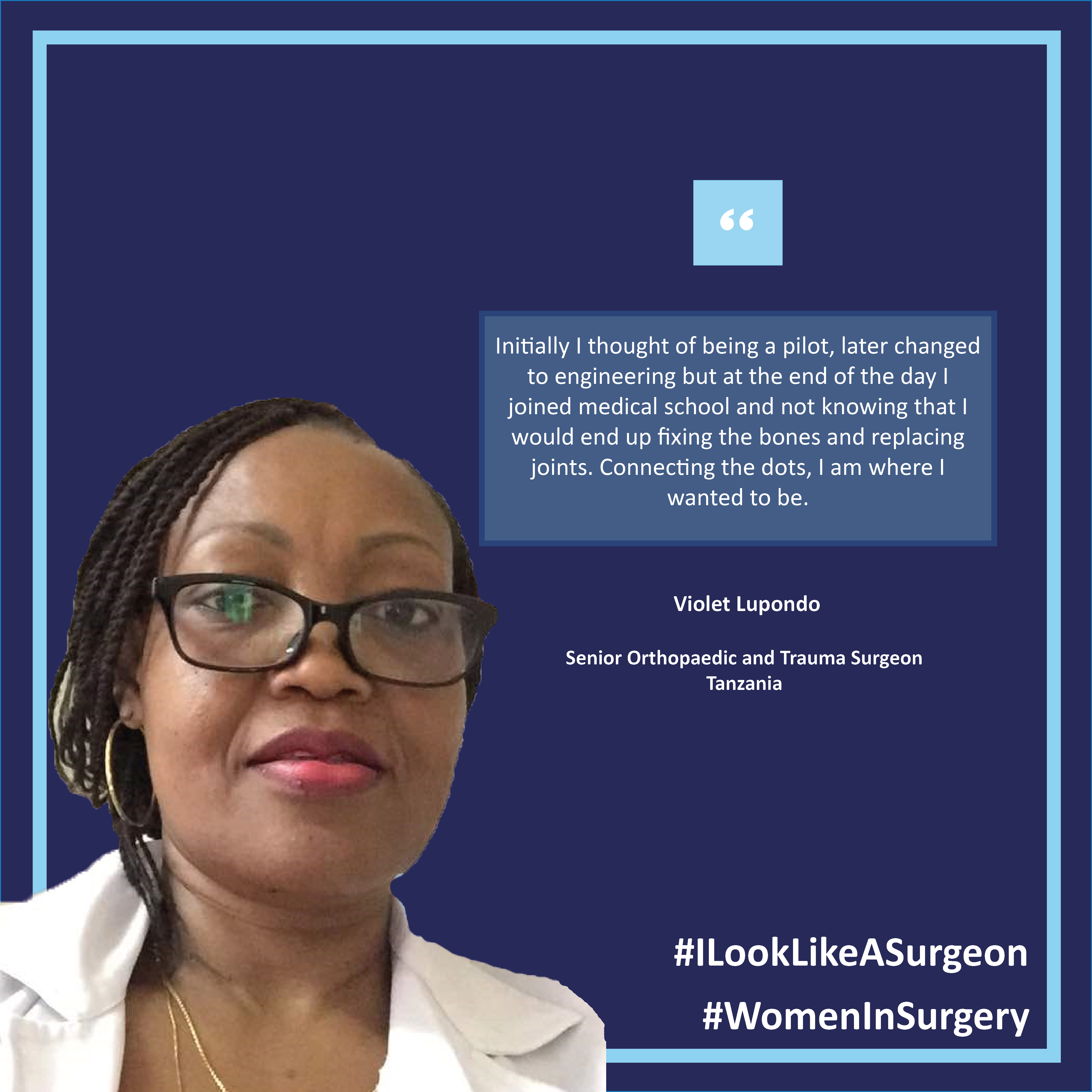Women in Surgery – Tanzania
By Violet Lupondo
According to the World Health Organization (WHO), Africa has a predicted need for 3.7 million health workers in order to provide universal health care by 2030 (1). Tanzania is situated on the Eastern side of Africa, with the land area of about 945 km2 and population of 50M. The country is faced with major challenges such as poor infrastructure, low education levels, poverty, and disease including musculoskeletal injuries contributing to mortality and disability. Tanzania has one of the lowest physician-to-population ratios in the world despite high poverty-related disease burdens. In Tanzania, 17 percent of the burden of disease and 19 percent of deaths are due to surgical disease.
The Lancet Commission on Global Surgery estimates that at least 20-40 surgical specialists are needed per 100,000 population. The Tanzania Development Vision 2025 commits the nation to providing ‘access to quality primary health care for all’. To fulfill this vision, the government is working to increase the health workforce to meet the demands of the population. The current doctor ratio is only 3.1 per 100,000 population. In line with this effort, Tanzanian universities have expanded their medical student intakes dramatically from 55 students in 1991 to 1580 in 2015. Rural areas are severely underserved by health workers. In 2006, only 20% of doctors practiced in rural areas where 73% of Tanzania's population live. Despite the increasing number of doctors, there is no proportional increase in number of surgical trainees, especially not in orthopaedics and trauma.

In Tanzania 7.6% (9) of the nation’s 118 orthopaedic surgeons were female in 2019. Of the 51 orthopaedic trainees, 5.8% (3) were female.
The main focus in the medical workforce has been to improve the doctor-patient ratio through the increased enrolment of medical students. This initiative has also increased the number of female medical students consequently increasing the number of junior doctors choosing to pursue surgical careers, including orthopaedics and trauma. The exposure to orthopaedic surgery during undergraduate training has been increased with the expectation that this early career engagement will increase the number of doctors who apply for orthopaedic surgery training.
The College of Surgeons of East, Central and Southern Africa (COSECSA) is the largest surgical training institution in Sub-Saharan Africa. COSESCA was established 1999 and supports the Tanzania Development Vision 2025. The college has a 14-member council representing the regions of Sub-Saharan Africa. Its vision is to increase the number of surgeons in the COSESCA region, including Tanzania. There have been 340 surgeon graduates since COSESCA was established in 1999 and the goal is to have 500 graduates in 2020. There are currently 575 surgeons in training.
Women In Surgery Africa (WISA), under umbrella of COSESCA, has established a mentorship program. The American College of Surgeons (ACS) has provided a strong commitment to WISA and continues to support education and training of female surgical trainees across the region.
